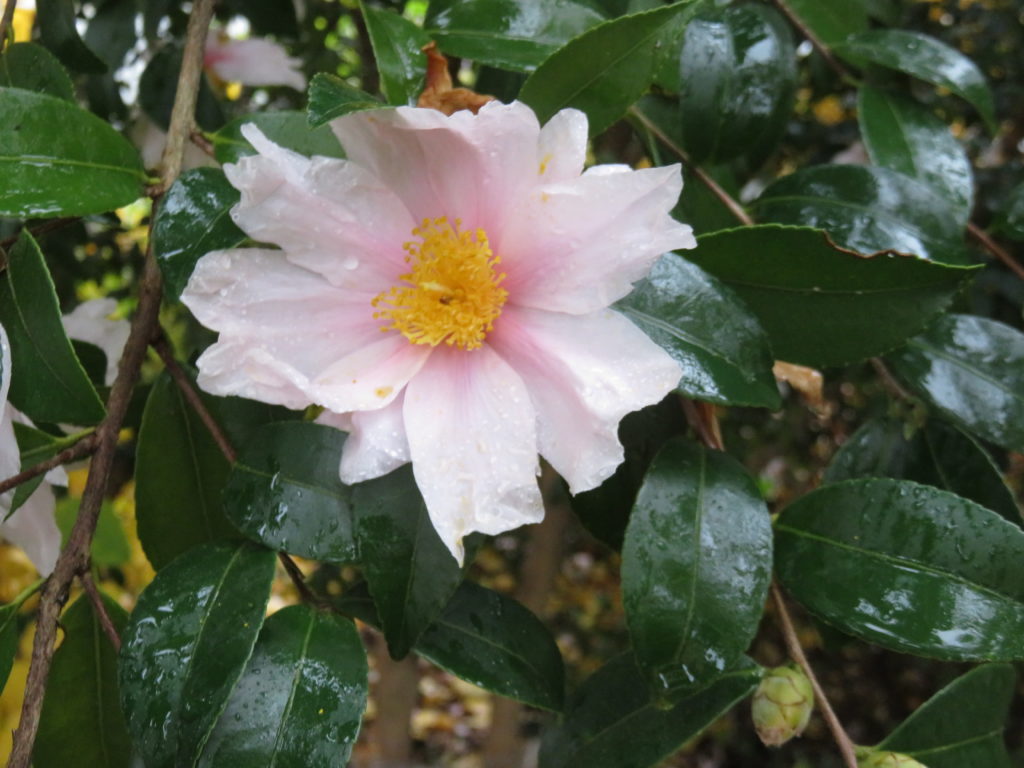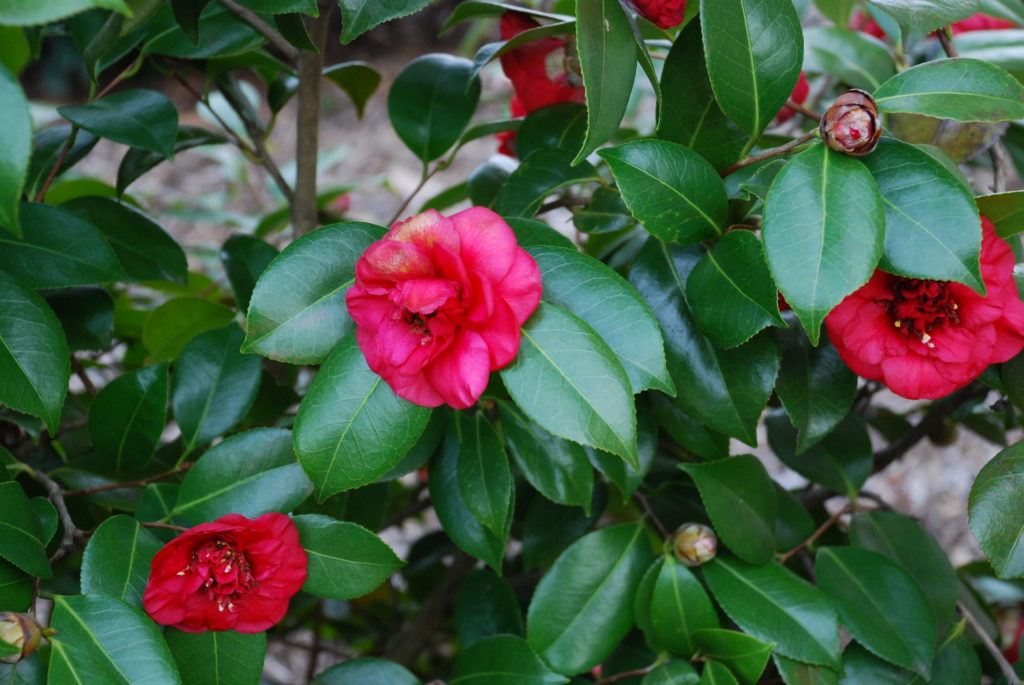Once upon a time, across the Southern U.S., camellias were highly prized for their showy flowers in the fall-winter landscape. What has changed is that gardeners in the Middle Atlantic and mid-Southern states can now grow them equally well.

Camellias are evergreen woody shrubs native to Asia. Currently, after decades of inter-breeding with species from South Korea and Japan, hardier varieties bloom reliably well from New York City south through Virginia, Tennessee, and North Carolina. Blooms of some cultivars measure 5 inches across.
According to the American Camellia Society, over 30,000 cultivars of camellia have been named. Depending upon the cultivar, bloom period is in the fall, winter or spring. The bloom cycle of a variety lasts 4 to 6 weeks. A hard cold snap can burn the open blooms, but tight budded flowers are unharmed. Floral colors include shades of pink, red, lavender, white, and multi-colored. Plants vary in size from 5 to 15 feet tall with a spread between 6 to 12 feet in width.
Camellias like an acidic soil (5.5 -6.8 is the ideal range), along with good soil drainage and moisture. Water shrubs as needed during summer dry spells. Camellias benefit from spring feeding with a fertilizer labeled for acid-loving shrubs. A partially sunny spot or a location with morning sun and afternoon shade is perfect. Prune camellias as needed in spring after blooming has finished.
Today’s camellias, in part, are the result of plant breeders Drs. William Ackerman (USDA- retired) and Clifford Park (Camellia Forest Nursery). They introduced a series of interspecific crosses between C. oleifera and C. sasanqua, C. hiemalis, or C. vernalis selections. Many, not all, are identified under the “Winter” and “April” series logo. They bloom in the fall or spring respectively.

Over fifty zone 6 hardy camellias are currently available. In addition, plants of several zone 7 hardy varieties will survive in zone 6 (minus 10 °F) unharmed. The open and partially closed blooms will be injured during cold snaps, but tight budded varieties often are not damaged.

 Posted in
Posted in 
